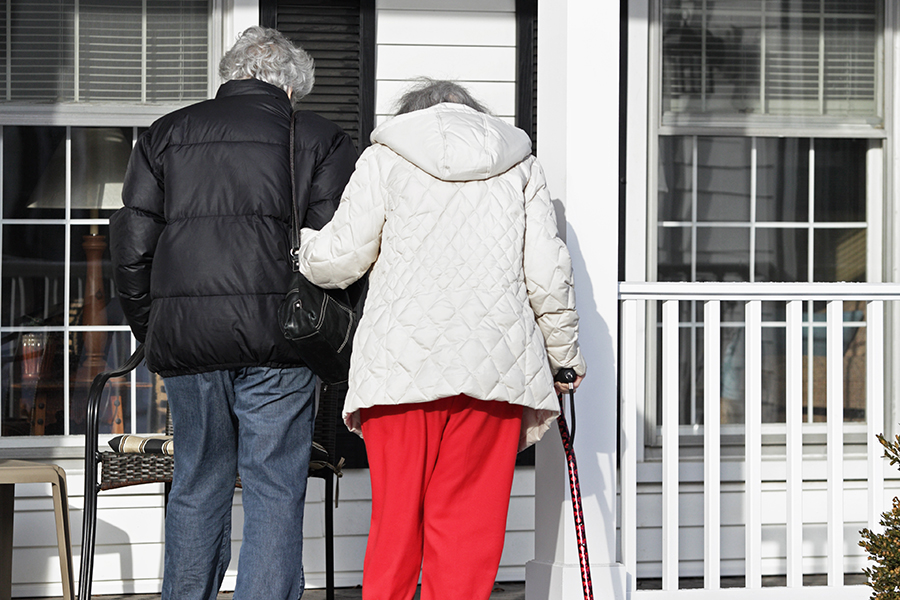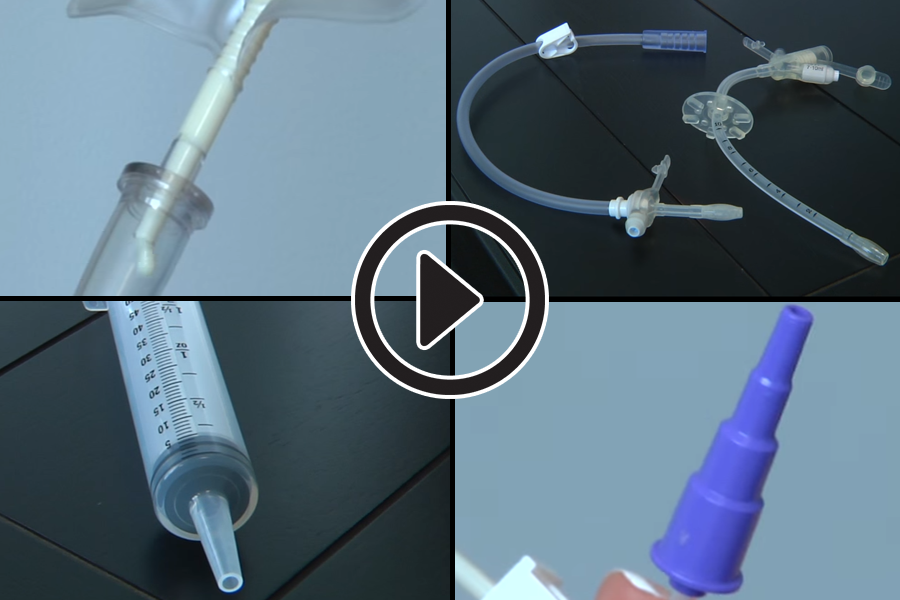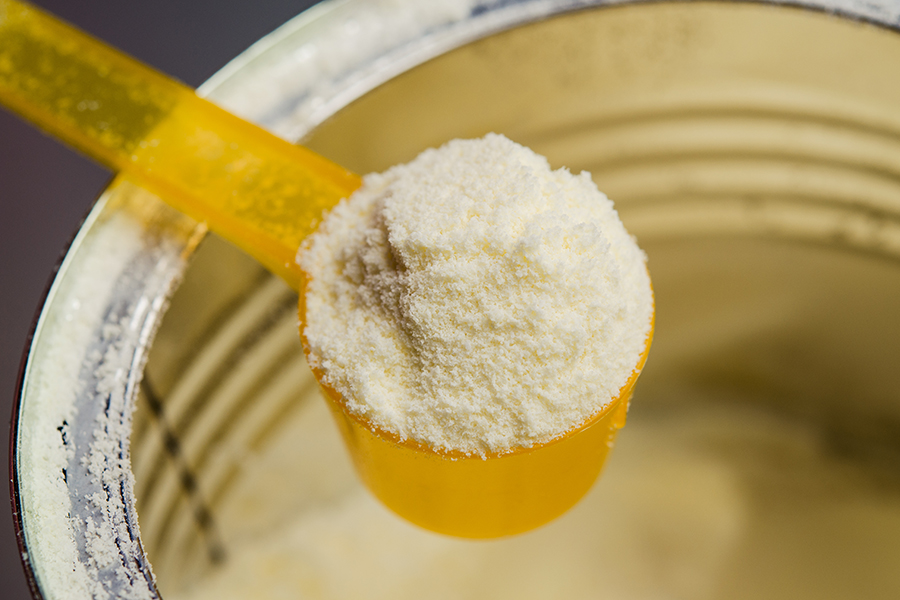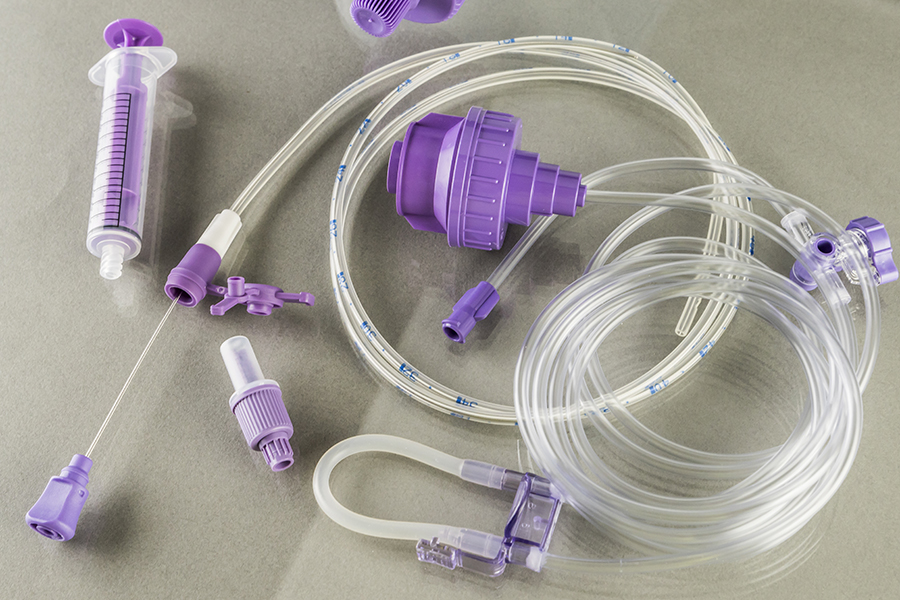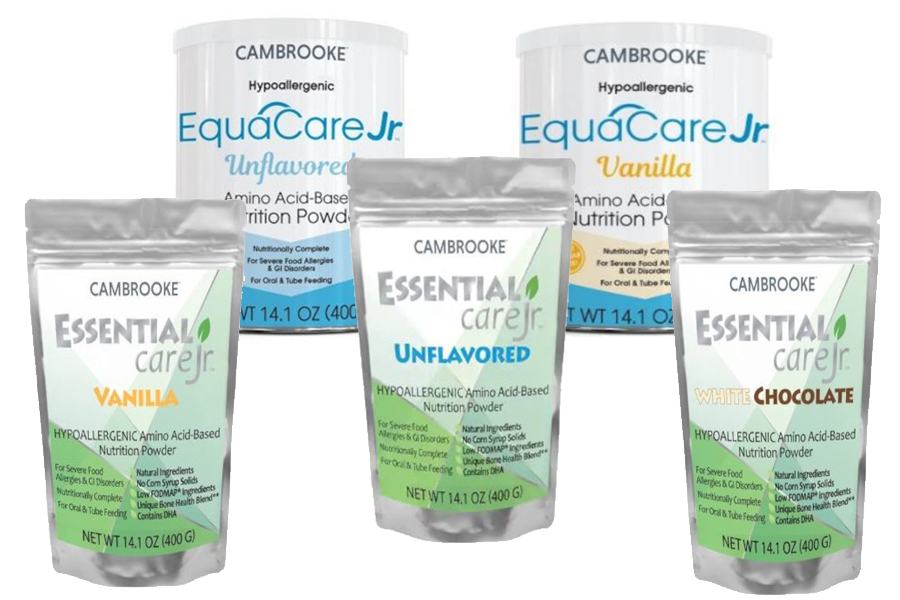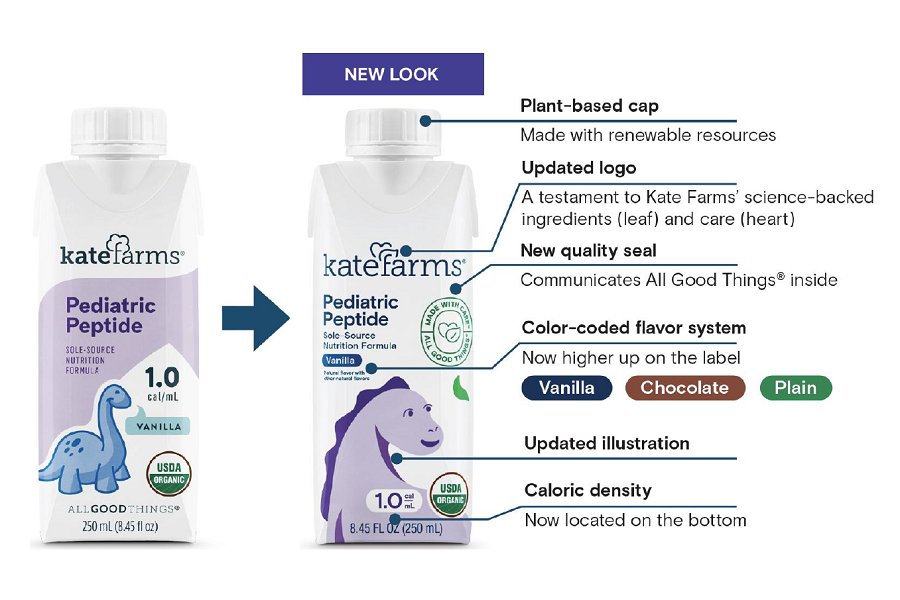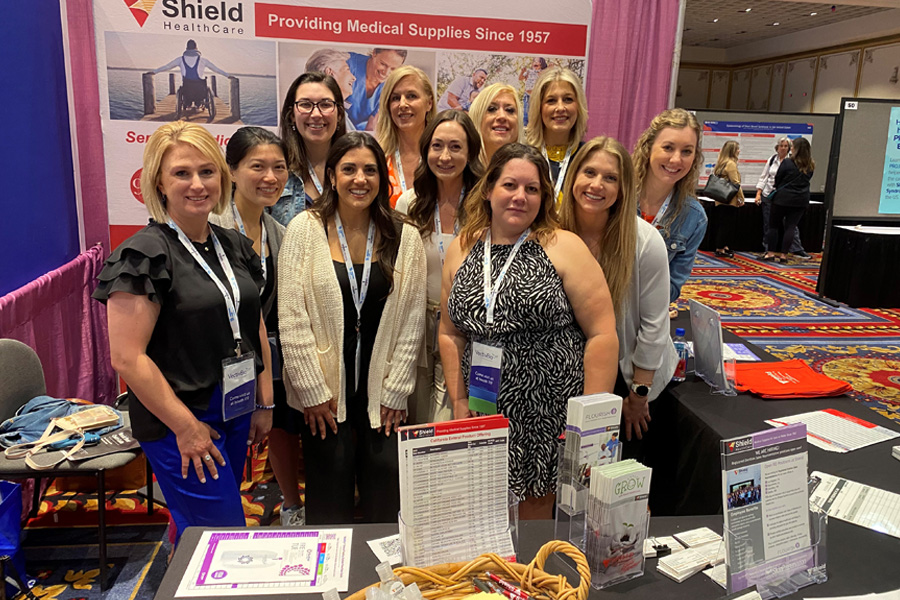Feeling overwhelmed? You’re not alone. Home tube feeding is widely used to reduce hospital stays and improve quality of life for people who rely on a feeding tube for nutrition. There’s a lot to think about during a hospital discharge, however. Before going home, you should be trained on the home tube feeding prescription, how to use the equipment and supplies and how to prepare your home so that it is safe for tube feeding. All potential caregivers in the home should also be trained.
Home Tube Feeding Prescription:
Be familiar with the method of feeding, the name of the formula and the rate and the dose to be delivered. You should also know how much water to flush down the tube to maintain hydration and prevent clogging.
Here are some examples of tube feeding prescriptions:
Example 1
Rx: Nutren 2.0 @ 1 can over 15 minutes 3 times daily via syringe
Method: syringe/bolus
Formula name: Nutren 2.0
Dose: 1 can
Rate/frequency: 3 times daily
Duration: 15 minutes
Water flushes: 150 mL before and after each feeding 3 times daily
Example 2
Rx: Two Cal HN @ 50mL/hour x 15 hrs via feeding pump
Method: feeding pump
Formula name: Two Cal HN
Dose: 750 mL daily (50 mL x 15 hrs = 750 mL)
Rate: 50 mL/hr
Duration: 15 hours (6am to 9pm)
Water flushes: 250 mL before starting the feeding at 6am and after stopping it at 9pm
How to Use and Care for Equipment and Supplies:
Check out these informative videos:
How to Unclog Your Feeding Tube
Here’s a great article on tube site care: Skin Care and Your Feeding Tube
How to Prepare Your Home for Home Tube Feeding:
Use this checklist to make sure your home is prepared for safe home tube feeding:
√ Clean, running water:
Wash your hands thoroughly before handling formula and supplies and the feeding tube.
√ Sanitary environment:
Prevent contamination of the formula and supplies.
√ Sufficient space to store equipment and supplies:
Stay organized to keep things running smoothly.
√ Sufficient space to deliver tube feeding/space is clear of debris:
Keep obstacles out of the way to prevent falls.
√ Cool place to store formula:
Keep formula at room temperature.
√ Working electrical system:
Keep the feeding pump plugged in whenever possible to keep it charged.
√ Running Refrigerator:
Store unused formula for 24 hours.
√ Telephone access:
Keep important contact information handy for doctors, caregivers and your home medical supply company.
√ Resources close at hand:
- Know in advance how to get help troubleshooting complications and dealing with emergencies, such as power outages or natural disasters.
- Choose a home medical supply company with registered dietitians. RDs can help you prevent and deal with common complications of home tube feeding, such as weight loss or gain, tube clogging, gastrointestinal symptoms and hydration issues.
- Enlist the support of a tube feeding support organization, such as the Oley Foundation or the Feeding Tube Awareness Foundation.







